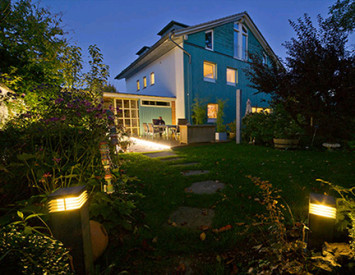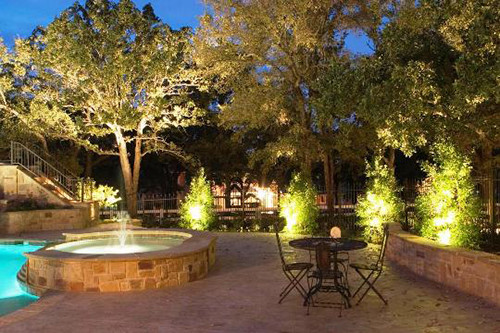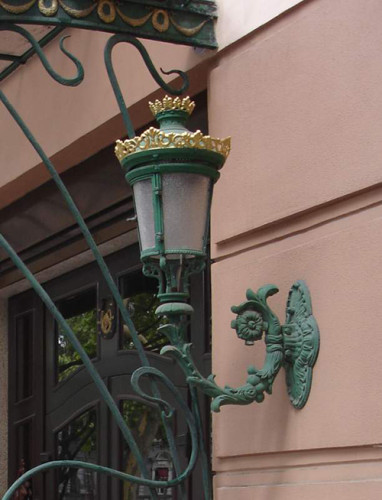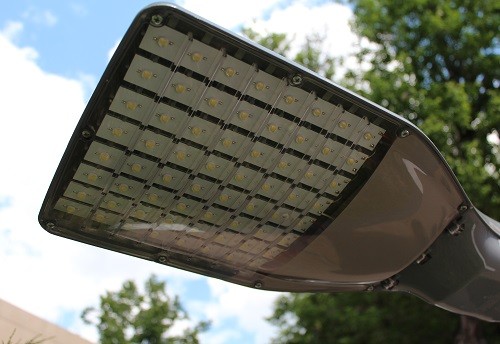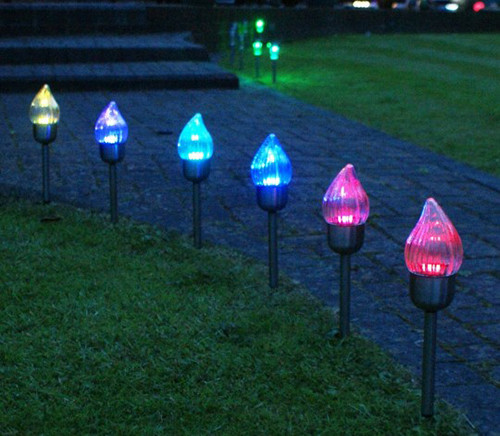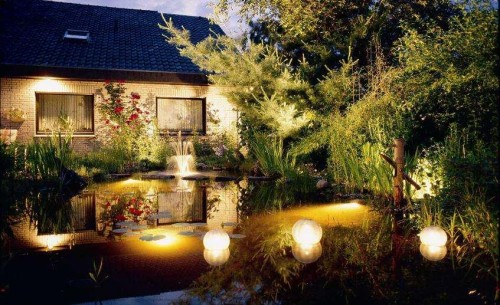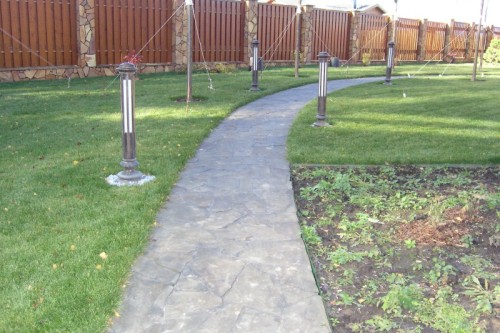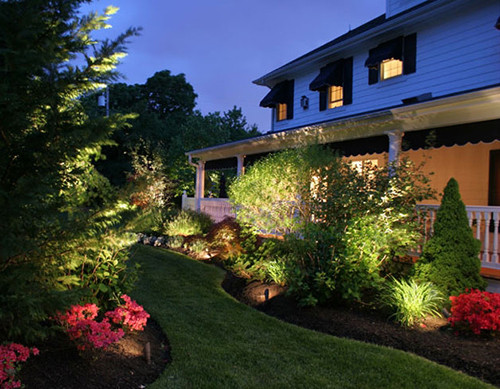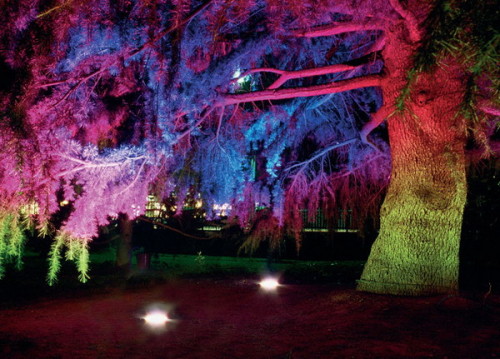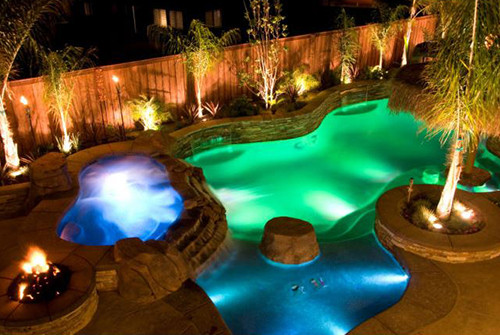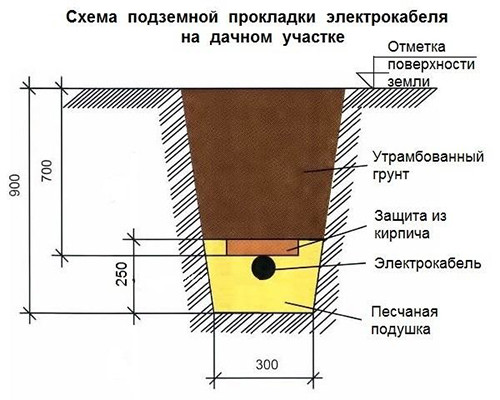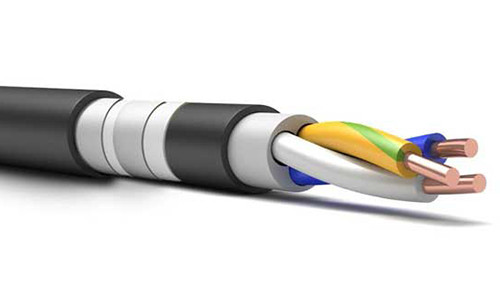Installation of lamps in a summer cottage is a rather time-consuming task, but real even for an electrician-novice. It is clear that lighting should be not only inside the house, but also outside, otherwise it will become impossible to move around the yard after sunset. In this article, we will discuss which lamps can be used for cottage, what cables are needed for them and how to independently install lighting.
Content
Lighting methods
Any lighting, internal or external, performs decorative or functional tasks. That is why it is necessary to immediately determine whether the lamp will be installed for beauty or for a more practical goal. Decorative lamps are installed in the garden or around the perimeter of the house. They illuminate small architectural forms, flower beds, alpine slides and water bodies. “Useful” lamps are responsible for the safety of movement around the territory. They are mounted along the entire length of garden paths, near the entrance to the site, on the porch, etc.
Installation and connection of lamps in the country has a number of features associated with operational factors. So, products installed outside should have good protection against temperature changes, high humidity, ultraviolet radiation and other weather phenomena. Cables laid through the air or in the ground should have the same advantages.
What should be paid special attention to when choosing lamps for a summer residence:
- degree of moisture capacity;
- frost resistance;
- quality certificate;
- guarantee.
Useful advice: Practice shows that the best qualities are demonstrated by lamps working from low tension.
The choice of some specific type of lamps depends on purely individual parameters: the desired effect, financial capabilities, complexity of installation, etc.
Varieties of lamps
To illuminate all the necessary objects in the country, you need to carefully plan the placement of devices. However, not only this affects the effectiveness of the system. For example, if you hang a small ceiling with a 60 watts over a gate or gate, then such lighting will make it possible to make out only a keyhole to open the door. And if in the same place put a lamp column with an LED lamp or a spotlight, then there is enough light not only on the keyhole, but also halfway to the house.
There are a lot of types of street lamps, but not all of them are suitable for use in the country. One of the most successful and attractive options is forged wall lamps. They simultaneously give a lot of light and decorate the facade.
LED lamps have recently gained unheard of popularity. They are perfect for use in the open air and generally have a lot of advantages compared to other devices. Firstly, they consume strikingly little energy and at the same time are able to continuously work for a long time. Secondly, with their modest “appetite”, LEDs give several times more brightness than incandescent lamps. They are environmentally friendly and are relatively inexpensive, and the installation of LED lamps will not require professional skills.
Economic owners are suitable for solar panels. Usually these are small flashlights that are inserted into the ground along the paths or at several points of the garden. During the day, the lamp is charged under the sun, and after sunset gives energy, illuminating the territory for several hours. The obvious advantage of sunlight is that for their installation it is not necessary to lay a cable - I stuck it in the ground and that’s it. The disadvantage of such devices is the lack of work in the dark (3-4 hours)-they give energy much faster than they accumulate. For this reason, they are used more for decorative purposes.
Conventional incandescent lamps are also suitable for installation on the street, however, in this case, you should take care of the high -quality waterproofing of the ceiling and cable. This option is not the most economical, so more and more summer residents prefer LEDs to him.
Types of lamps:
- Stand lanterns - such lamps are installed along the paths, near the arbors, ponds and benches. As a rule, it is made of steel and glass, forging can be used as a decoration. In the shape of the ceiling, there are most often spherical, rectangular or have a non -standard decorative configuration.
- Suspension lights - installation is carried out on a wall or other vertical structure through special hooks. Often, such lanterns are attached to large trees, which allows you to achieve the original light effect and harmoniously fit the lighting into the natural landscape. The forms of ceiling can be very different, but the most common products with a forged base and glass inserts.
- Street sconces - such lanterns are attached to the walls of houses or fences. Usually they are made of plastic, metal alloys and glass, but wooden models are also found. Using street sconces, you can favorably emphasize the features of the exterior and combine the buildings in the country into a single architectural ensemble.
- Ground lights are classic lampposts of various shapes and sizes. They are installed on the ground, pre -building the simplest foundation to protect against the effects of fusion forces and better stability.
The choice is truly impressive, but moderation should be observed - too bright lighting will reveal the shortcomings of architecture or landscape, but the moderate and skillful location of several lamps will turn even the most plain summer cottage into a cozy abode.
The principles of lighting
So, we smoothly got to the topic of rational lighting, that is, the art of properly arranged lamps so that they would hide the flaws and emphasize the advantages of the external decoration of the summer cottage.
The basic principles of choosing and installation of street lamps:
- Functionality - even if you just want to decorate the site with several light spots, try to arrange them so that they also benefit. If you just put the lamps anywhere, it will be uneconomical and completely inappropriate. First of all, highlight the strategically important sections of the territory - a gate or gate, a porch, a path from the gate to the house and from the house to the toilet, if the convenience is located on the street. If there are stairs in the country, pay special attention to them - stumbling in the dark on the steps is much easier than on a flat path. In other words, remove all potentially dangerous and important areas from the shadows.
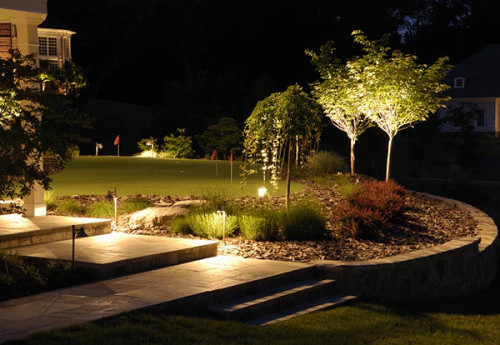
- Decorative - if you set out to illuminate all the paths, arbors and important segments of the territory, let it be beautiful. Even the most modest spotlight can be beaten so that it will emphasize, say, the modern style of high-tech exterior. As for the purely decorative backlight, use it only where there really is something to see - lush flowering bushes or flower beds, beautiful garden sculptures, trunks of bizarre trees, carved gazebo, etc.
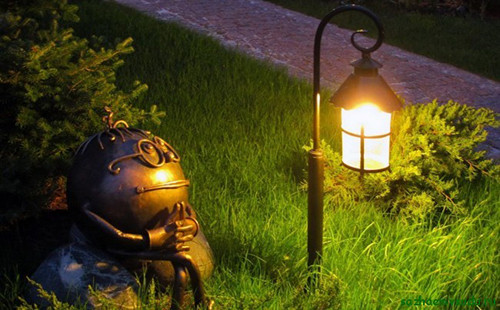
Separately, it is worth talking about choosing lamps for garden paths. Movement around the territory should be as safe as possible, so for lighting you need to choose the appropriate devices. Imagine that massive street lanterns stand along a narrow path - it is not too beautiful and inconvenient. Lamps should evenly illuminate the entire route, that is, in order to walk along the path, you did not jump from one bright spot to another, but followed the path illuminated by moderate scattered light. In this case, the lamps should not be directed into the eyes of the walking. If the path is short and relatively straight, it will be enough to indicate its contours with small lamps, slightly towering above the ground or completely located, flush with it. If sharp turns and stairs await you in the way, these places need to be paid special attention.
Plant lighting and reservoirs
If you want to highlight the plants on your site, then for this it is better to choose large specimens - perennial shrubs, massive trees. The point is not only that a small object will be “lost” in a bright light. A massive barrel or lush foliage will reflect part of the world, creating interesting effects.
The light flow should go from the bottom-up, while several lamps can be directed to one object at once. If you want to highlight the tree with one lamp, try to place it as close to the barrel as possible. If the light sources are more than 2, place them at the same distance from each other around the entire perimeter of the tree so that the light flows converge at the top in about one place. Experts do not recommend placing lamps directly in the crown of the tree or the foliage of the shrub, since then they will give local spots of light, and the composition will turn out to be incomplete.
As for the reservoirs, in this case, light sources are recommended to be installed around the perimeter or below the water level. If you set the lamp above the water, then the light will be reflected from the surface, without giving the desired effect. To make a beautiful and expressive backlight of the reservoir, use the perimeter backlight from the inside and the path leading to it. In this case, the perimeter backlight should be brighter than the lighting of the approaches, to focus on the pond itself and at the same time make access to it safe.
Features of installation of lamps in the country
So, we have already found out that any street lamps should be protected from moisture and other negative influences. Cables for them should also have high -quality insulation, the degree of which depends on the method of laying the wiring. You can draw a cable from the shield to the lamp by air or underground.
It is better to let the cable underground in all respects - it will not spoil the appearance of the site, for it it is not necessary to install supports, it will not break the wind. Moreover, the cable laid so long will remain integral, since the Earth protects it from any mechanical influences. The air method of laying cables is used in cases where the lamps are in the immediate vicinity of the house, for example, for suspended models, sconces or pillars at the porch. The advantage of the air method in its simplicity and minimal labor intensity compared to the underground, and the cost of such work will be much lower. The latter is explained not only by ensuring the protection of the cable underground (laying in special pipes), but also by the cost of the cable itself - for the underground method you need a special maximum insulated product.
Below, in general terms, we will consider how to install lighting in the courtyard of the cottage, when the internal wiring and the working electrical panels with ground are already available. To work, you will need a shovel, garden drill, cement and sand for kneading concrete, trowel, sand and gravel for creating a drainage pillow, boards or plywood for formwork.
Installation of lamps with your own hands in a summer cottage:
- First of all, make the calculation of lighting, which implies the total power of all installed lamps and the length of the cable. To simplify your work, draw a detailed outer wiring scheme, indicating the path of laying the cable from each lamp to the shield. The gasket by air can be indicated by a dashed line, underground - continuous. The calculation of the total power consumption is necessary in order to understand whether your shield will cope with such a load. So for large territories with an abundance of tracks, it is more rational to carry out the installation of LED lamps due to their economy. Depending on the power consumption, choose the cable section.
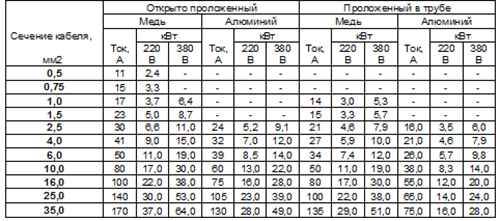
- Create a detailed gasket scheme indicating the depth of cable laying, the depth of foundations for supports for lampposts, etc. Under the ground, the cable should go at a depth of about 70 cm 60 cm from the paths, 50 cm from the pipeline and at least 30 cm from other underground cables. By air, the cable is laid 3 m above the garden paths and 6 m above the roadway. Do not forget to designate the grounding places for all devices.
- Create supports for lamps. If these are wall products, drill holes for anchor in the wall. If you want to install a lamppost, you need to make a miniature foundation for it. To do this, dig a hole in the ground with a garden drill to a depth below the soil freezing point (otherwise the lamp will be skewed in the spring), pour the sand with gravel on the bottom, compact, install a wooden formwork, and stick a plastic pipe into the center (a cable will be laid inside it). Both ends of the pipe must be sealed so that concrete does not get inside. Pour the formwork with concrete and immediately install an anchor to fix the pillar at an angle of 90 °.
- When the concrete hardens, remove the formwork and process it from all sides with bitumen mastic for waterproofing. Install a lamppost and lay a cable to it. Experts recommend connecting the wires with isolated terminals (heat -assigned tube or other insulation). Do not forget to install switches in places protected from moisture. It is best to make a special box for them, for example, at the entrance to the site and duplicate on the porch or inside the house.
- Carry out test inclusion by checking the resistance of zero with the phase.
Installation of lamps in a video format will help you in the entirety to evaluate the specifics of work:
You can install lighting in the country in a few hours, of course, when it comes to suspended products or installation of spotlights. Working with lanterns will take more time, but the result is worth it. The main points that should be taken into account is the choice of products (lamps and cables) created specifically for use on the street, the correct calculation of the power and grounding of each element. Subject to these three rules, lighting on the site will delight you for many years.
